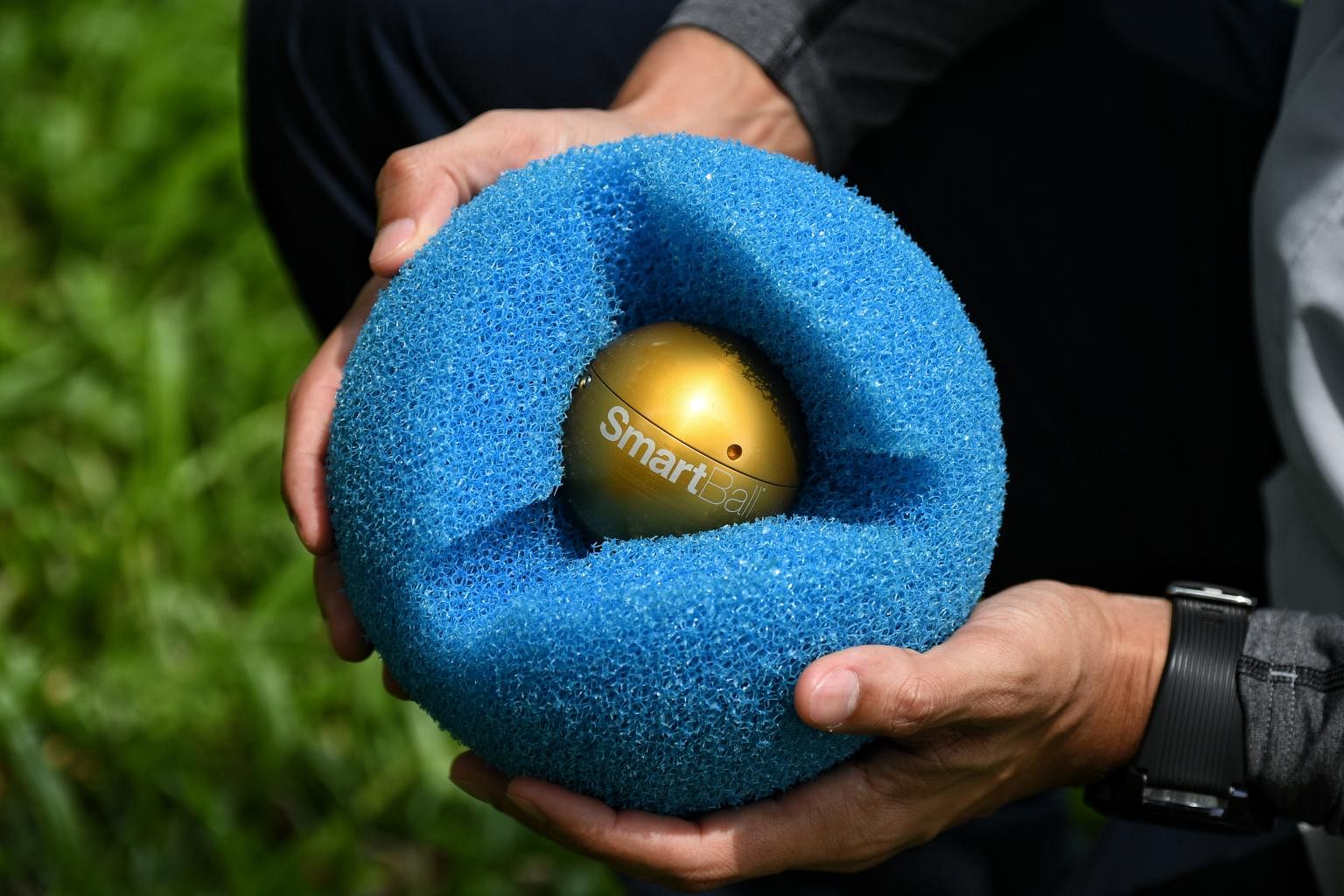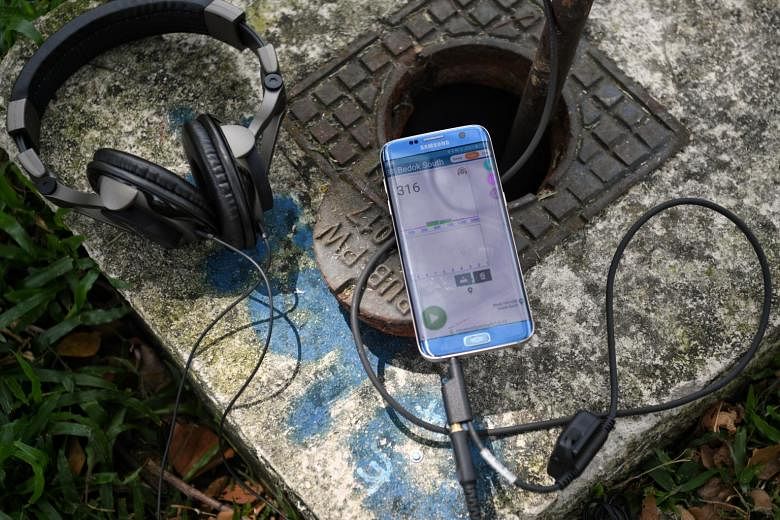SINGAPORE - When Mr Ong Guan started working as a PUB technician in 1976, he made for an odd sight, with a device that looks like a stethoscope in his ears, the other end connected to two metal discs on the ground.
This was par for the course at the time, as the equipment he was using - known as geophones - was necessary to pinpoint the position of leaks in underground water pipes.
Trained technicians would first press a metal stick with a disc on one end, called a listening stick, against the ground to listen for faint noises generated by water escaping from the pressurised pipes.
If they heard an abnormal noise, they would then put on the geophones and slowly walk along the length of ground above the pipes, trying to listen for where the sound was loudest.
But the equipment would also pick up noises such as those of passing cars and ambient sounds. So technicians would have to stand still and try to tune out the other sounds in their head, focusing only on the faint noise of underground water.
"Sometimes my boss would tell me, can you go and (check the pipes) at 2am, because it would be too noisy before then," said Mr Ong last Friday (Nov 6).
Now an engineer at PUB, the 66-year-old recalled that this was an extremely tedious and time-consuming process that relied on a lot of trial and error, and took a lot of manpower.
And while some may think that water leaks are a rare occurrence here, PUB has recorded about five leaks per 100km of pipes yearly in recent years.
As Singapore's pipe network stretches over about 5,700km, this makes for about 285 leaks a year, or about five a week.
Mr Waseem Khan, 31, who leads PUB's Leak Detection Unit, clarified that this is actually one of the lowest rates in the world.
The senior engineer added that it is not possible for there to be no leaks in a water system.
"As your pipeline ages, it undergoes wear and tear. (Also), with the soil condition you might have corrosion. You might have works ongoing, so third party damage might occur when someone excavates and hits your pipe. So it's not physically possible to achieve zero leaks," he said.
PUB said it is important to continually detect and repair leaks - even the small ones - before they escalate, in order to conserve precious water.
Thankfully, technology today is very different.
A network of 120 sensors line the large water mains here, monitoring and analysing noises in the pipes to pick up the presence of leaks.
These sensors are able to accurately identify and pinpoint the location of a leak within 3m.
In the three years since the sensors were piloted in 2017, they were able to detect 13 leaks - including a 13mm hole at the base of a pipe beside a major expressway.
Following the successful trial, the water agency aims to deploy about 1,200 sensors islandwide before the end of next year.

PUB has also started exploring the use of a SmartBall - a round sensor encased in a protective foam covering. It is put into a pipe and propelled along by the flow of the water.
This allows it to detect any cracks or anomalies along the walls of the pipe by picking up noise signatures related to leaks, and survey long stretches of pipe in a single deployment.
Over 500km of pipes will be monitored by these sensors over the next five years, said the agency.
Finally, PUB's leak detection teams have been equipped with smartphone sensors since last year - the high-tech versions of the listening sticks of the past.
One end of the sensor is attached to any smartphone, while the other is placed on a pipe fitting to pick up sounds from the pipe.

An app on the phone will automatically digitalise and analyse the sounds picked up by the sensor, while filtering out any ambient noise, accurately pinpointing the location of any leaks.
These complement the noise loggers and correlators, devices introduced in the 2000s which also help to check for leaks. Listening sticks are also still used to corroborate the results of the new tools.
Demonstrating some of the new technologies on Friday, Mr Ong said that things have improved greatly since the 1970s.
"Now with the (technology), we're able to analyse more accurately... you just need to key in something, and it'll tell you where the next (leak) spot is," he said.
Using technology has also reduced training time for new technicians, said Mr Khan.
"Previously, you'd need a few months, maybe even years, depending on the person, to be able to train them up to use some of these tools for leak detection, whereas now with the implementation of technology, the learning curve has shortened to maybe a few weeks, a few months," he said.

The agency's director of water supply (network), Mr Ridzuan Ismail, said: "PUB is always on the lookout for new technologies for early leak detection, so that we can minimise water loss in the network and increase the resilience of service that we provide to our customers.
"With intelligent leak monitoring and detection technology, we are taking a more preventive and predictive approach and moving away from a resource-intensive operation that requires very specialised skills. This will bring us closer to our goal of transforming our operations through digitalisation to becoming a smart utility of the future."


